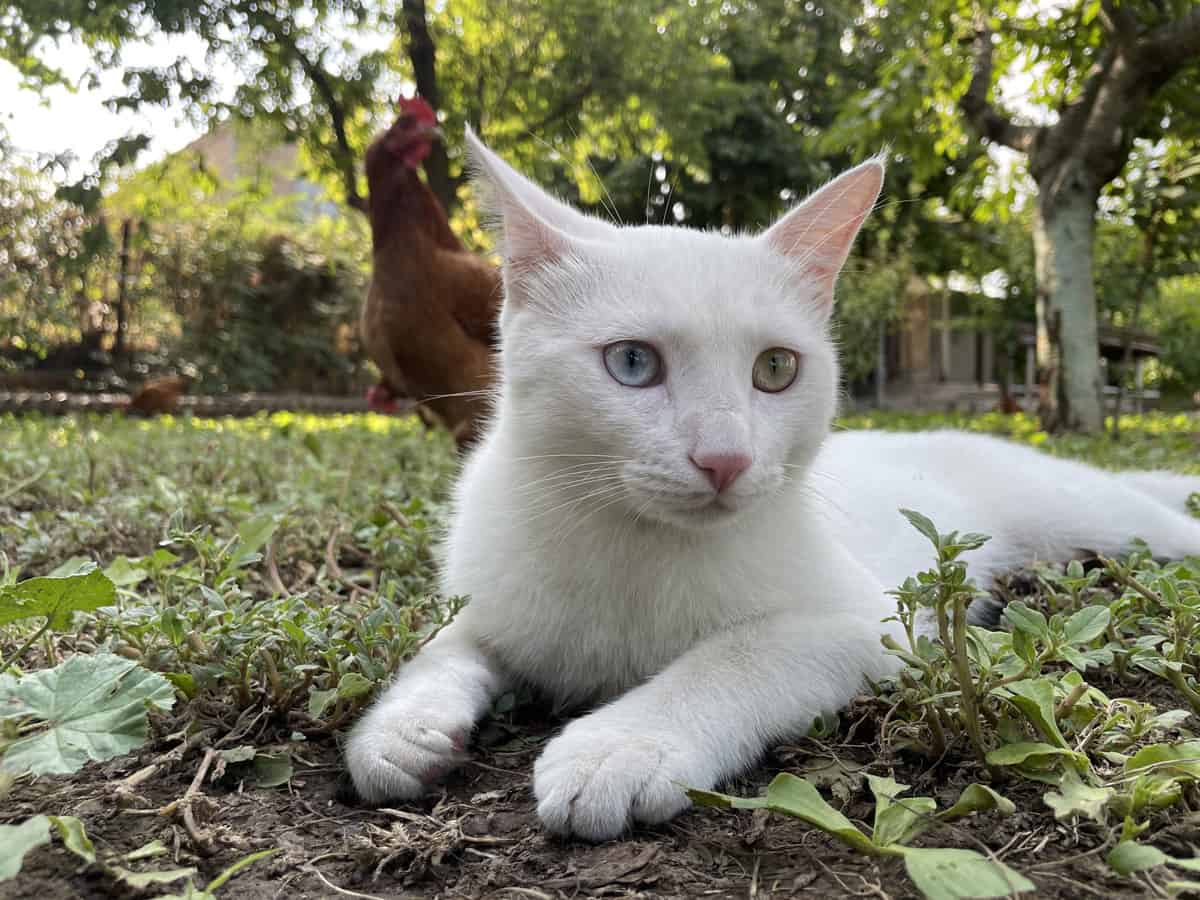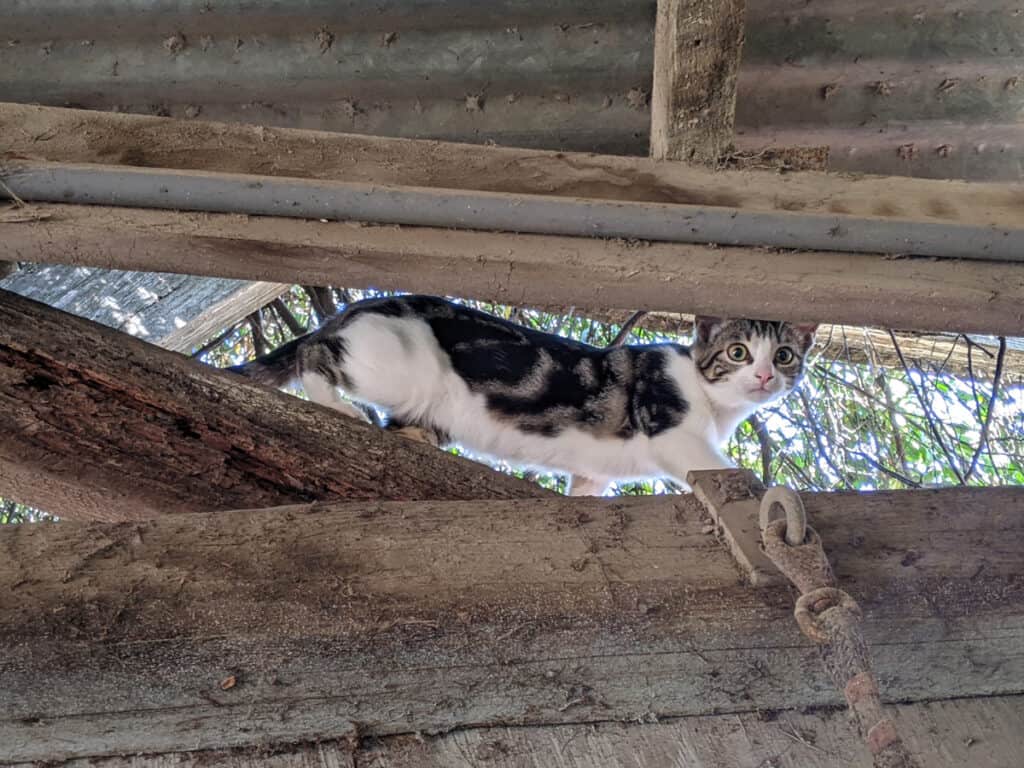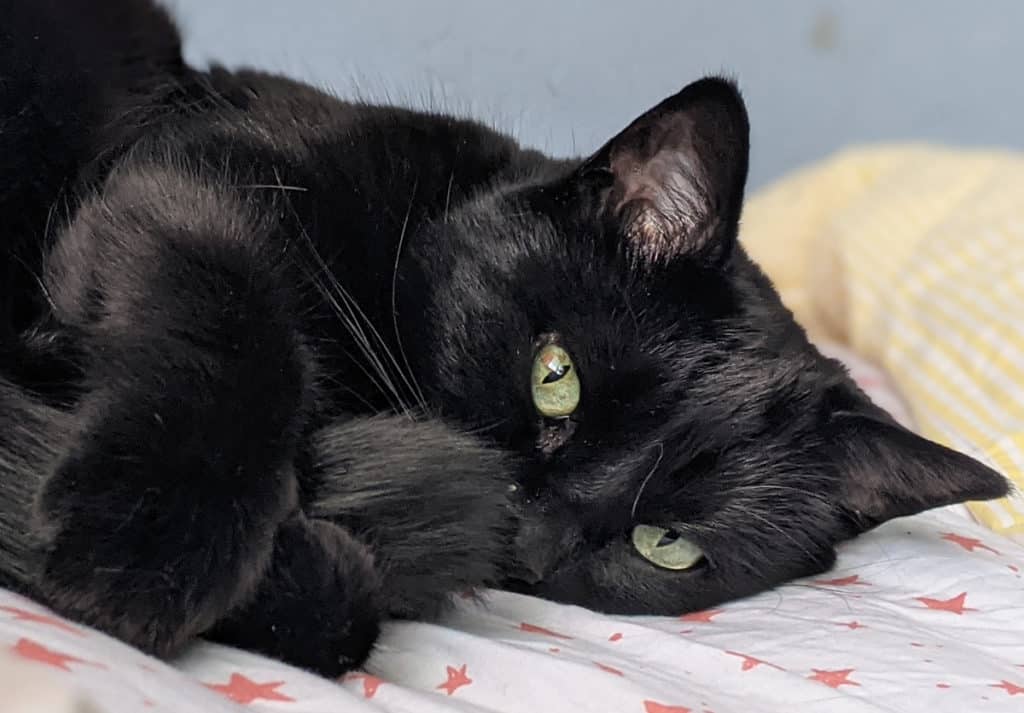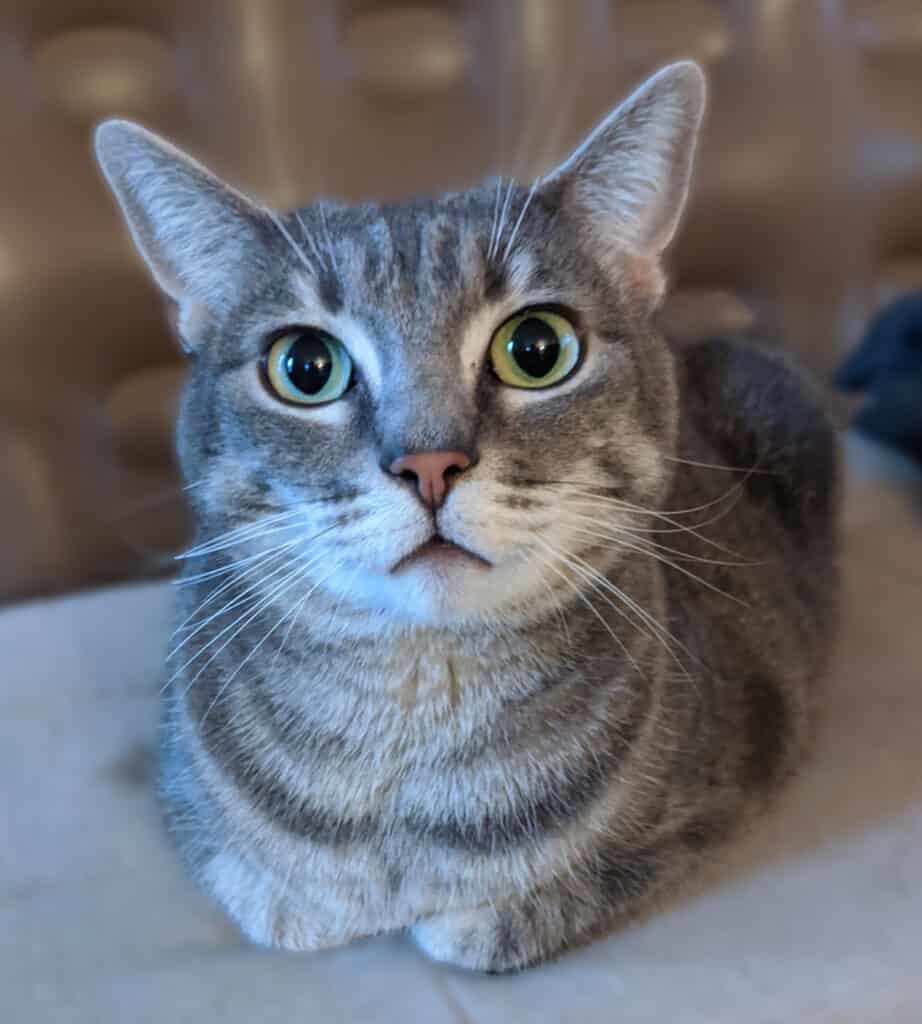Unless you have a purebred cat, the most common cat in households is what is known as the domestic shorthair (DSH). According to the American Human Society, 95% of cats in the United States are domestic shorthairs.
The domestic shorthair cat is a catchall term that covers cats that are considered mixed breed which means these cats have a mix of different cat breeds. This term can be confusing with the purebred cat breeds like the American Shorthair and the British Shorthair.
As the name implies, the fur length of the domestic shorthair cat is short. A mixed-breed cat with long fur is known as a domestic longhair cat (DLH).
Names for domestic shorthair cats
Domestic shorthair cats can also be referred with a slight variation as domestic shorthaired or domestic short-haired cats.
In the United Kingdom, domestic shorthair cats are known as moggies. Domestic shorthair cats are also commonly referred to as house cats.
On social media, referring to a mixed breed cat as a “standard issue cat” is common.
Geographic variation in domestic shorthair cats
Since domestic shorthair cats tends to intermix locally, over time these cats tend to develop geographic variations specific to the region they are from. These locally adapted domestic cats are known as landraces.
The Van cat is one example of a domestic shorthair cat landrace. The van cat is a domestic cat that developed in the Lake Van area of the Armenian Highlands in Turkey.
Van cats tend to be fairly large cats with a mostly white coat with blue or amber eyes. It is common for van cats to have heterochromia with two different colored eyes.

These geographic variations have also given rise to purebred cat breeds like the American Shorthair and the British Shorthair. The Van cat is the origin for the purebred Turkish Van cat.
Coat pattern and eye colors for domestic shorthair cats

Domestic shorthairs, because of the wide variety of cat breeds that make up these cats, can have a wide variety of patterns such a tabby, torbie, harlequin, or be a solid color. Likewise, domestic shorthairs have a wide ranges of colors from pure white cats to pure black.

Domestic shorthairs can also have a wide range of eye colors from yellow to dark brown.

Weight of a domestic shorthair cat
Domestic shorthair cats can be a range of sizes. The typical weight range for a domestic shorthair cat is 6 to 12 pounds.
Domestic shorthair cats suffer less from diseases than purebreds
Since domestic shorthair cats tends to have a wider genetic mix as compared to purebred cats, they tend to suffer less from disease related to a lack of genetic diversity. [1]
Domestic shorthair cats have a wider range of personalities than purebreds
One of the traits that is commonly selected for when breeding purebred cats is personality. Ragdoll cats, for example, are know for their docile, loyal, and affectionate behavior towards their owners. Domestic shorthair cats have a mix of a variety of cat breeds so their individual personalities will vary widely compared to purebreds. [2]
References
[1] Sandøe, P., Nørspang, A. P., Forkman, B., Bjørnvad, C. R., Kondrup, S. V., & Lund, T. B. (2017). The burden of domestication: a representative study of welfare in privately owned cats in Denmark. Anim. Welf, 26(1), 1-10.
[2] Turner, D. C. (2000). Human-cat interactions: relationships with, and breed differences between, non-pedigree, Persian and Siamese cats. Companion Animals and Us: Exploring the relationships between people and pets, 257-71.







